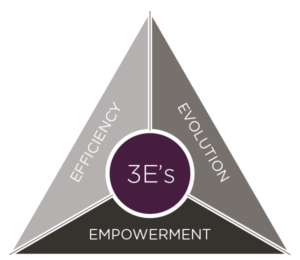How do you do more than just survive? How can you actually thrive? Businesses are in the grips of an unprecedented health, social and economic crisis. For some, it has brought unusually heavy demand and with it an extraordinary opportunity for growth. But for most, it has brought a sudden stop or abrupt change, and with it much pain and challenge. Employees are dispersed; supply chains disrupted; customers disappeared. Simple survival or the implementation of some sort of continuity plan was step one. But while that may be a win in its own right, it is not enough. And the key question facing many businesses now is what to do next, either as the recession elongates or recovery comes.
To answer this question, YSC teamed up with IMD Business School to research crises and recessions of the past 100 years to see what could be learned from these past events about what businesses need to do now. Examining previous studies by economists into acute crises such as 9/11 and Hurricane Katrina, as well more prolonged recessions such as the Great Depression of the 1930s and the 2008 financial crisis, we discovered three things:
![]()
There is a small group of businesses that are clear winners in recovery periods. While around one in six firms effectively collapse, and around three-quarters struggle but survive, about 9% seem to thrive, significantly outperforming competitors.
![]()
How businesses act in recovery periods is more important in determining which businesses are part of the 9% that thrive, than pre-crisis performance or structural factors such as business size or age.
![]()
There are three business behaviors that are most commonly seen in the 9% of businesses that thrive:
Efficiency
Firms that succeed focus not just on managing cash and costs, but on operational efficiency – on using the crisis to make their business fitter.
Evolution
Output-side investment in things like product development and marketing tends to deliver higher profits and market share increases in recovery.
Empowerment
Businesses that are decentralized and empower employees to make use of this tend to do better in recovery periods, regardless of size or market segment. And the positive effect of this is primarily driven through creating local discretion over outputs (sales and new products) rather than inputs (like labor and capital).
Knowing these things is one thing; making them happen is quite another. The challenge for businesses and their leaders then, is how to drive efficiency, evolution and empowerment. With this in mind, YSC have been working with clients in four main ways:
![]()
Participating in business recovery teams, contributing with advice on best practice and guidance on leadership strategy and behavior-change.
![]()
Evaluating business’ and leaders’ operating environments for the degree to which they drive and support the 3E’s of efficiency, evolution and empowerment.
![]()
Providing high-touch coaching support to CEOs and Senior Executives to cascade the 3E’s across their businesses.
![]()
Delivering brief, targeted online training in practical techniques for leaders and managers for how they can drive and support the 3E’s in their teams.

